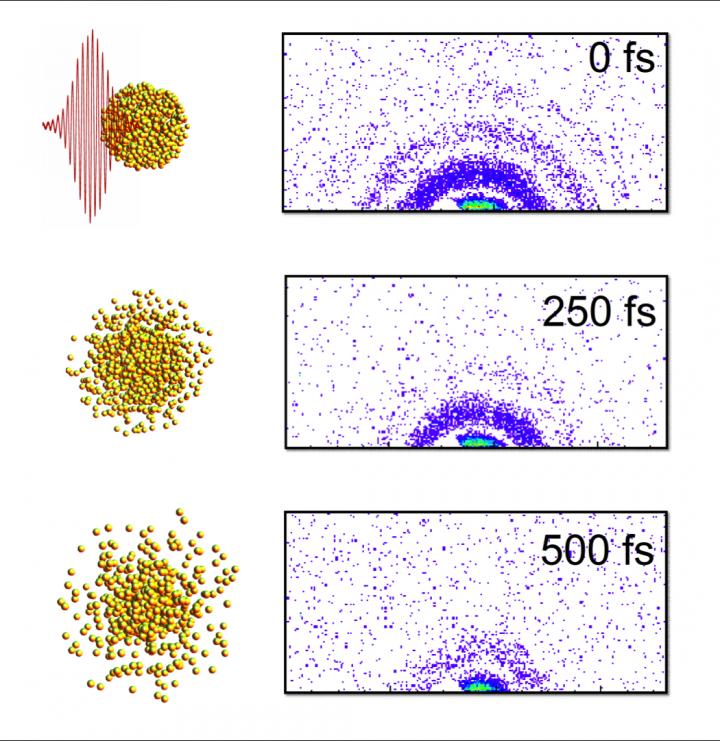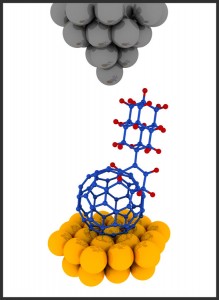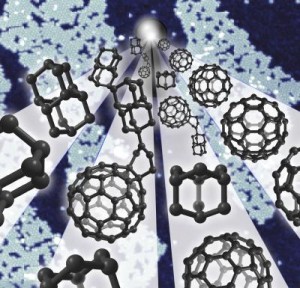The circumstances around Nigel S. Lockyer’s departure as Director of Canada’s National Laboratory for Particle and Nuclear Physics, TRIUMF, are very interesting. Just weeks ago, TRIUMF announced a major innovation for producing medical isotopes (my June 9, 2013 posting), which should have an enormous impact on cities around the world and their access to medical isotopes. (Briefly, cities with cyclotrons could produce, using the technology developed by TRIUMF, their own medical isotopes without using material from nuclear reactors.)
Also in the recent past, Canada’s much storied McGill University joined the TRIUMF consortium (I’m surprized it took this long), from the May 10, 2013 news release,
At its recent Board of Management meeting, TRIUMF approved McGill University as an associate member of the consortium of universities that owns and operates Canada’s national laboratory for particle and nuclear physics. McGill joins 17 other Canadian universities in leading TRIUMF.
Paul Young, Chair of the Board and Vice President for Research at the University of Toronto, said, “The addition of McGill to the TRIUMF family is a great step forward. McGill brings world-class scientists and students to TRIUMF and TRIUMF brings world-leading research tools and partnerships to McGill.”
The university’s closer association with TRIUMF will allow it to participate in discussions about setting the direction of the laboratory as well provide enhanced partnerships for new research infrastructure that strengthens efforts on McGill’s campuses. Dr. Rose Goldstein, McGill Vice-Principal (Research and International Relations), said, “We are delighted to formalize our long-standing involvement in TRIUMF. It is an important bridge to international research opportunities at CERN and elsewhere. Associate membership in TRIUMF will also help McGill advance its Strategic Research Plan, especially in the priority area of exploring the natural environment, space, and the universe.”
McGill University has been involved in TRIUMF-led activities for several decades, most notably as part of the Higgs-hunting efforts at CERN. TRIUMF constructed parts of the Large Hadron Collider that ultimately produced Higgs bosons. The co-discovery was made by the ATLAS experiment for which TRIUMF led Canadian construction of several major components, and McGill played a key role in the development of the experiment’s trigger system. McGill and TRIUMF have also worked together on particle-physics projects in Japan and the U.S.
Professor Charles Gale, chair of the Department of Physics, played a key role in formalizing the relationship between TRIUMF and McGill. He said, “Our department is one of the top in North America in research, teaching, and service. Undoubtedly our work with TRIUMF has helped contribute to that and I expect both institutions to blossom even further.” Professor of physics and Canadian Research Chair in Particle Physics Brigitte Vachon added, “TRIUMF provides key resources to my students and me that make our research at CERN possible; the discovery of the Higgs boson is a perfect example of what such collaboration can achieve.”
Nigel S. Lockyer, director of TRIUMF, commented, “The addition of McGill to the TRIUMF team is welcome and long overdue. We have been working together for decades in subatomic physics and this acknowledgment of the partnership enhances both institutions and builds stronger ties in areas such as materials science and nuclear medicine.”
A scant month after McGill joins the consortium and weeks after a major announcement about medical isotopes, Lockyer announces his departure for the Fermilabs in the US, from the May 20, 2013 TRIUMF news release,
In his capacity as Chairman of the Board of Directors of Fermi Research Alliance, LLC, University of Chicago President Robert J. Zimmer today announced that TRIUMF’s director Nigel S. Lockyer has been selected to become the next director of the U.S. Department of Energy’s Fermi National Accelerator Laboratory, located outside Chicago. Lockyer is expected to complete his work at TRIUMF this summer and begin at Fermilab in the autumn.
Paul Young, Chair of TRIUMF’s Board of Management and Vice President of Research and Innovation at the University of Toronto said, “Nigel was selected from a truly outstanding set of international candidates for this challenging and important position. Although it will be a short-term loss, this development is a clear recognition of Nigel’s vision and passion for science and the international leadership taken by TRIUMF and Canada in subatomic physics. On behalf of the entire TRIUMF Board, we wish Nigel, TRIUMF, and Fermilab every success in the future.”
Lockyer set TRIUMF upon a new course when he arrived six years ago, focusing the team on “Advancing isotopes for science and medicine.” Based on TRIUMF’s existing infrastructure and talent, this initiative ranged from expanding the nuclear-medicine program so that it is now playing a leading role in resolving the medical-isotope crisis to the formulation and funding of a new flagship facility called ARIEL that will double TRIUMF’s capabilities for producing exotic isotopes used in science and for developing tomorrow’s medical isotopes. At the heart of ARIEL is a next-generation electron accelerator using modern superconducting radio-frequency technology.
Commenting on Nigel’s leadership of TRIUMF, Paul Young added, “One look at TRIUMF’s current trajectory and you can see that this is a man of great ambition and talent. Working with the Board and a great team at the lab, he propelled TRIUMF to new heights. We have all been fortunate at TRIUMF to have Nigel as a colleague and leader.”
Reflecting on his time at TRIUMF and the upcoming transition to Fermilab, Nigel Lockyer said, “Knowing that TRIUMF is in good hands with a superb leadership team and seeing its growing string of accomplishments has helped make this decision a tiny bit easier. The laboratory’s future is secure and TRIUMF knows exactly what it is doing. I am proud to have contributed to TRIUMF’s successes and it is my hope to ignite the same energy and enthusiasm in the U.S. by heading the team at Fermilab.” He added, “I also expect to foster a new level of partnership between the U.S. and Canada in these key areas of science and technology.”
“Nigel has had a profound impact on TRIUMF,” said David B. MacFarlane, chair of the National Research Council’s Advisory Committee on TRIUMF and Associate Laboratory Director at the U.S. SLAC National Accelerator Laboratory. “He articulated an ambitious new vision for the laboratory and energetically set it upon a path toward an exciting world-class program in rare-isotope beams and subatomic-physics research. When ARIEL comes online, the lab will be fulfilling the vision that Nigel and his team boldly initiated.” David MacFarlane added, “The TRIUMF community will certainly miss his warmth, his insatiable scientific curiosity, his creativity, and his faith in the laboratory and its entire staff. However, I fully expect these same characteristics will serve Nigel well in his new leadership role as Fermilab director.”
As per standard practice, the TRIUMF Board of Management will announce plans and timelines for the international search process and interim leadership within the next few weeks.
Before speculating on the search process and interim leadership appointment, I have a comment of sorts about the Fermilab, which was last mentioned here in my Feb. 1, 2012 posting where I excerpted this interesting comment from a news release,
From the Feb. 1, 2012 news release on EurekAlert,
In this month’s Physics World, reviews and careers editor, Margaret Harris, visits the Fermi National Accelerator Laboratory (Fermilab) to explore what future projects are in the pipeline now that the Tevatron particle accelerator has closed for good.
After 28 years of ground-breaking discoveries, the Tevatron accelerator has finally surrendered to the mighty Large Hadron Collider (LHC) at CERN [European Laboratory for Particle Physics], placing Fermilab, in some people’s mind, on the brink of disappearing into obscurity. [emphasis mine]
It seems the Fermilab is in eclipse and Lockyer is going there to engineer a turnaround. It makes one wonder what the conditions were when he arrived at TRIUMF six years ago (2006?). Leading on from that thought, the forthcoming decisions as to whom will be the interim Director and/or the next Director should be intriguing.
Usually an interim position is filled by a current staff member, which can lead to some fraught moments amongst internal competitors. That action, however fascinating, does not tend to become fodder for public consumption.
Frankly, I’m more interested in the board’s perspective. What happens if they pick an internal candidate while they prepare for the next stage when they’re conducting their international search? Based on absolutely no inside information whatsoever, I’m guessing that Tim Meyer, Head, Strategic Planning & Communications for TRIUMF, would be a viable internal candidate for interim director.
From a purely speculative position, let’s assume he makes a successful play to become the interim Director. At this point, the board will have to consider what direction is the right one for TRIUMF while weighing up the various candidates for the permanent position. Assuming the interim Director is ambitious and wants to become the permanent Director, the dynamics could get very interesting indeed.
From the board’s perspective, you want the best candidate and you want to keep your staff. In Canada, there’s one TRIUMF; there are no other comparable institutions in the country. Should an internal candidate such as Meyer get the interim position but not the permanent one (assuming he’d want to be the permanent Director) he would have very few options in Canada.
Based on this speculation, I can safety predict some very interesting times ahead for TRIUMF and its board. In the meantime, I wish Lockyer all the best as he moves back to the US to lead the Fermilab.



![Bacteriorhodopsin is the only protein of purple membranes, which contains few different lipids. [downloaded from the University of Bari: http://www.biologia.uniba.it/fisiologia/corcelli/en/ric2.html]](http://www.frogheart.ca/wp-content/uploads/2013/07/purpleBacteriorhodopsin-300x225.jpg)